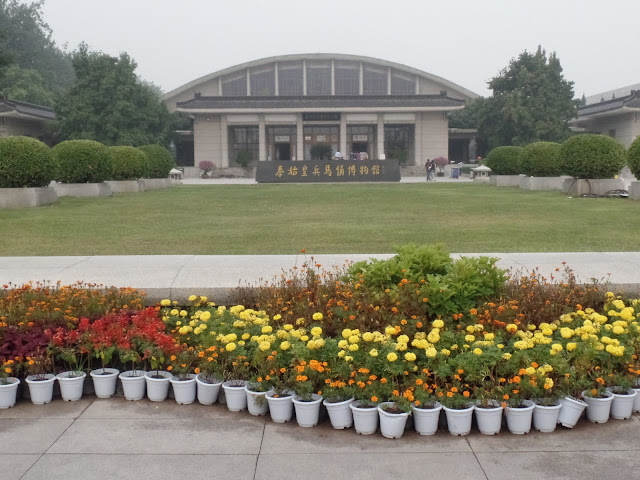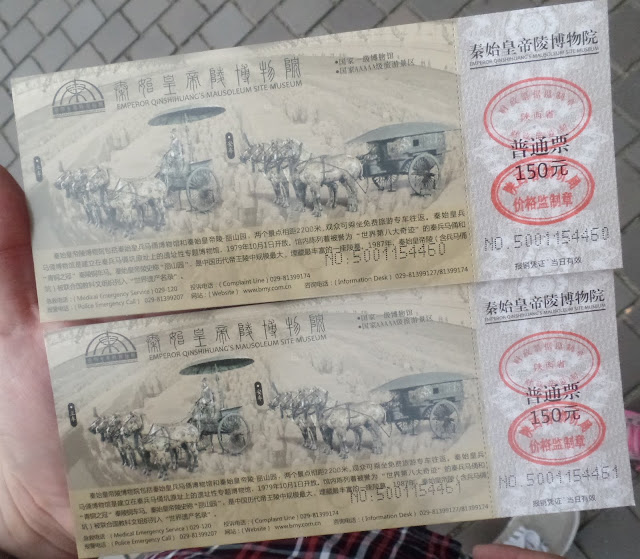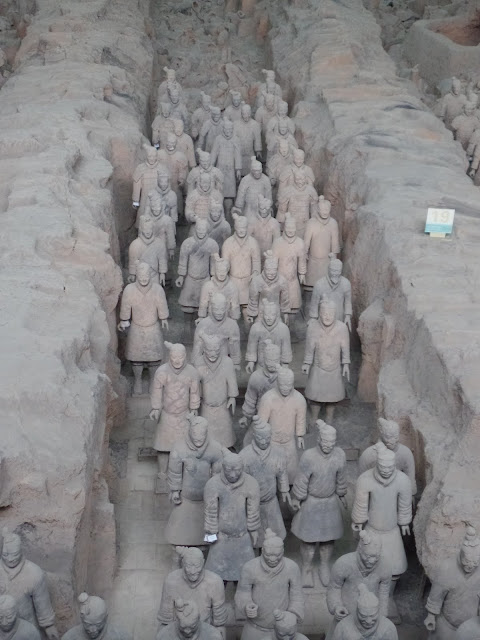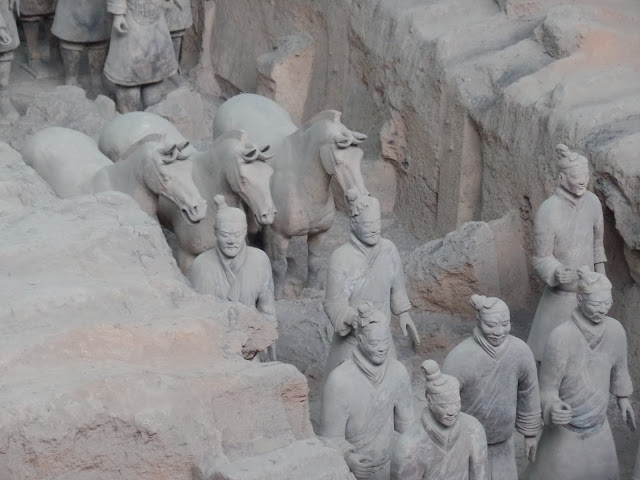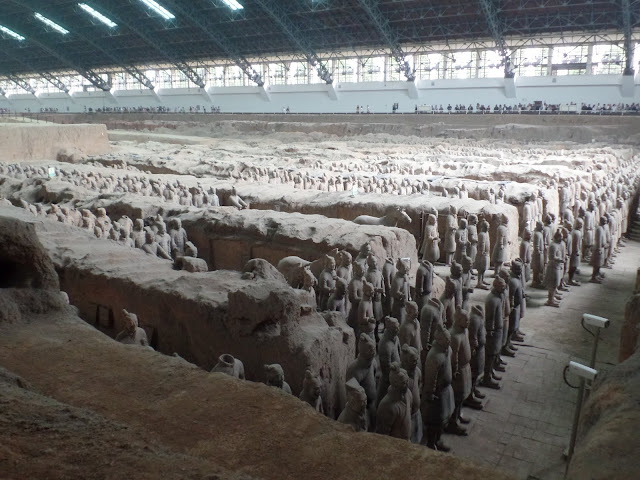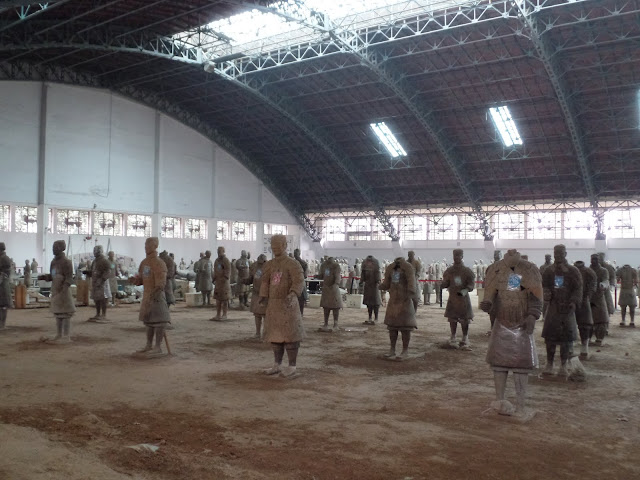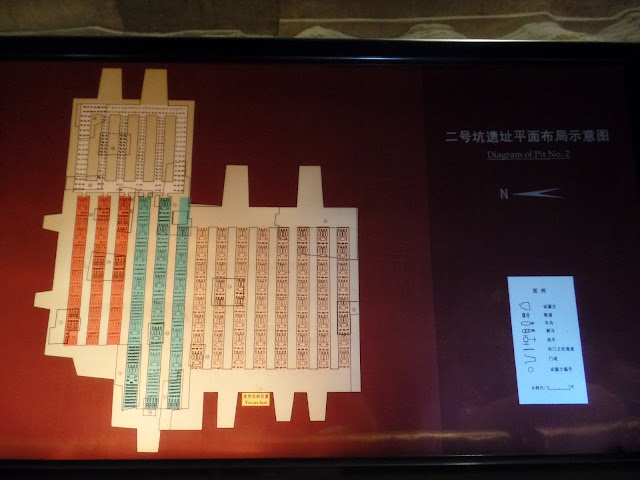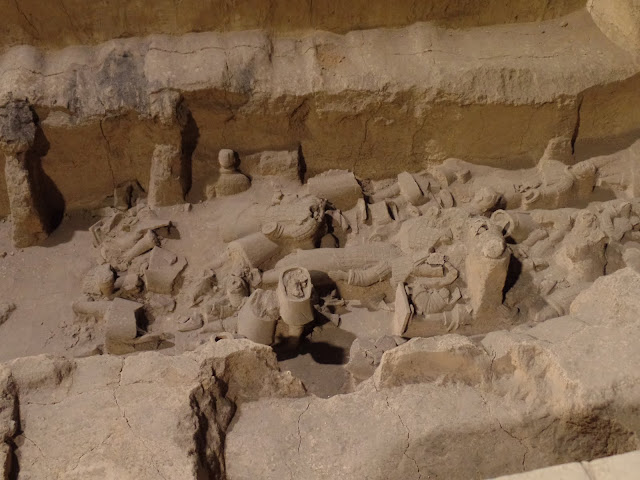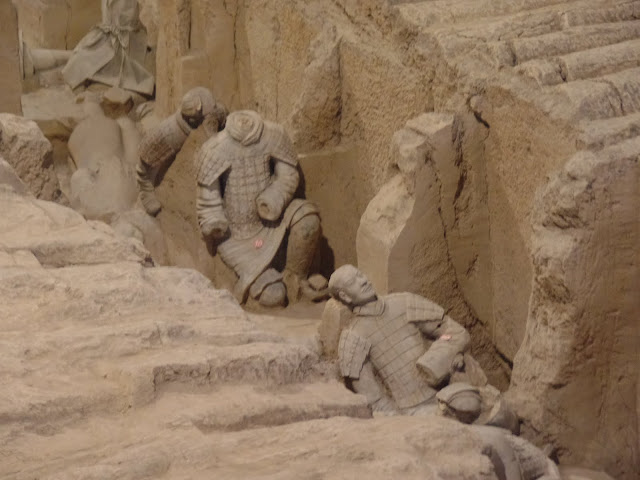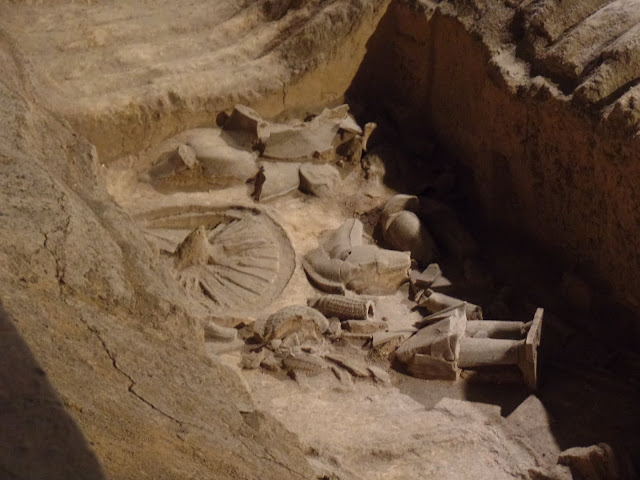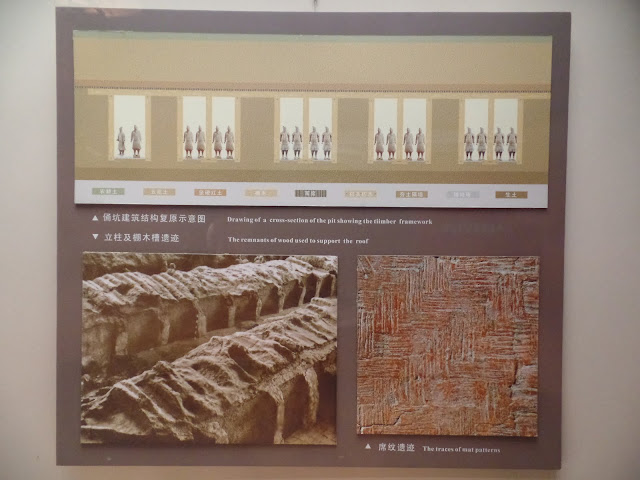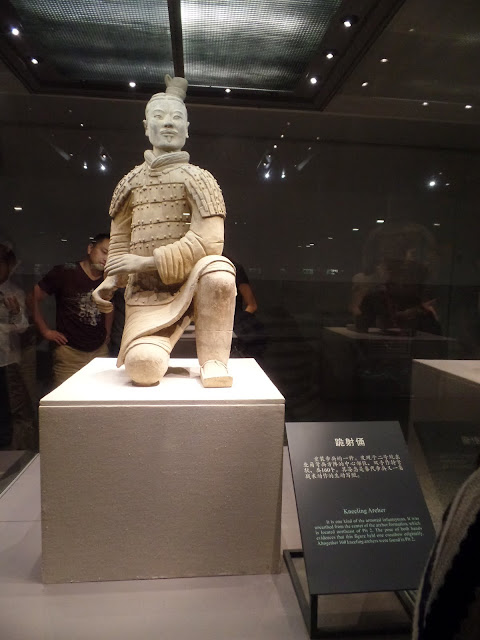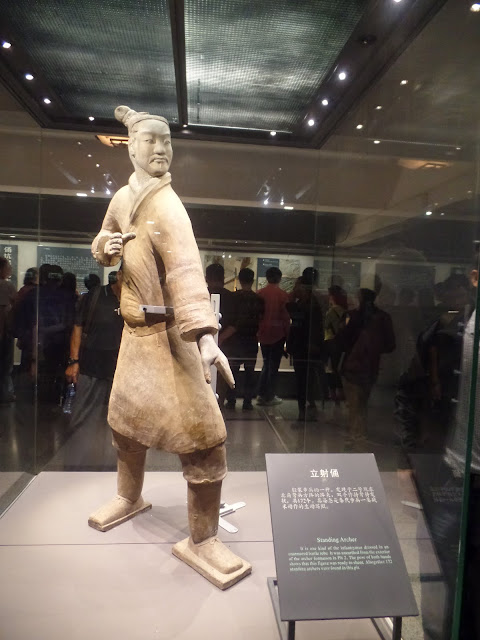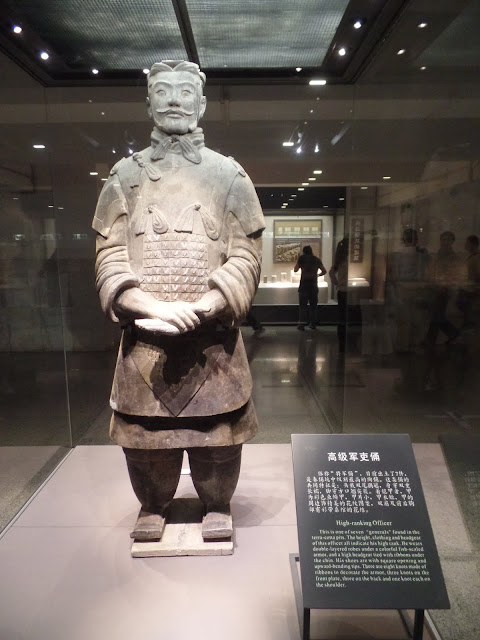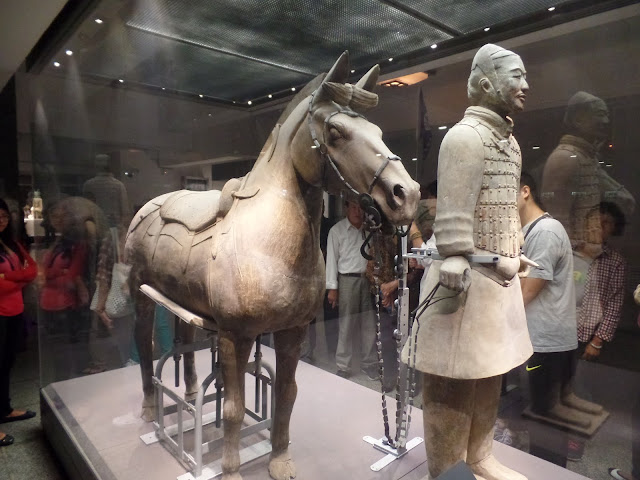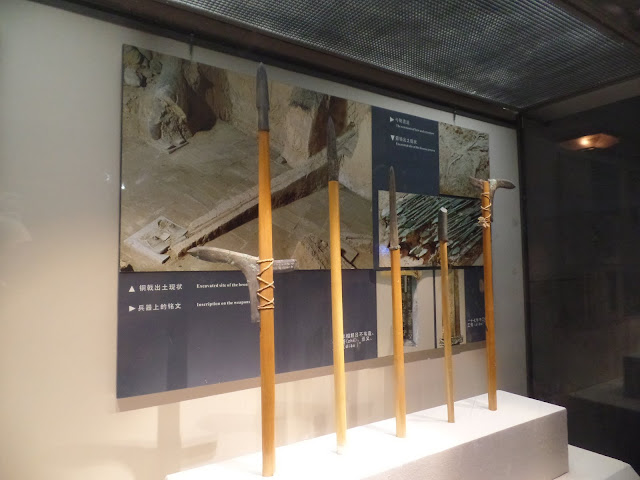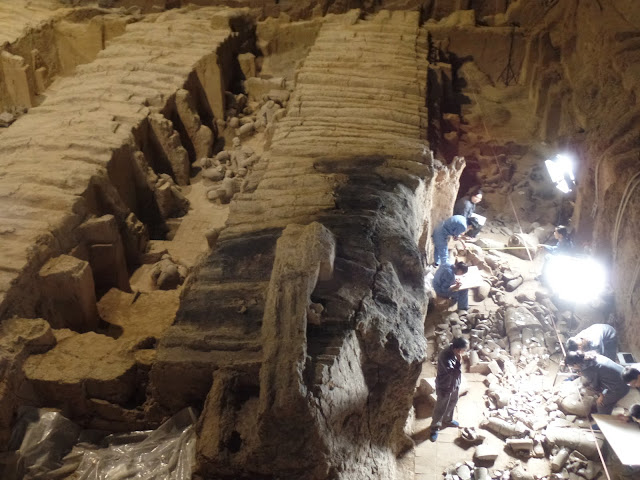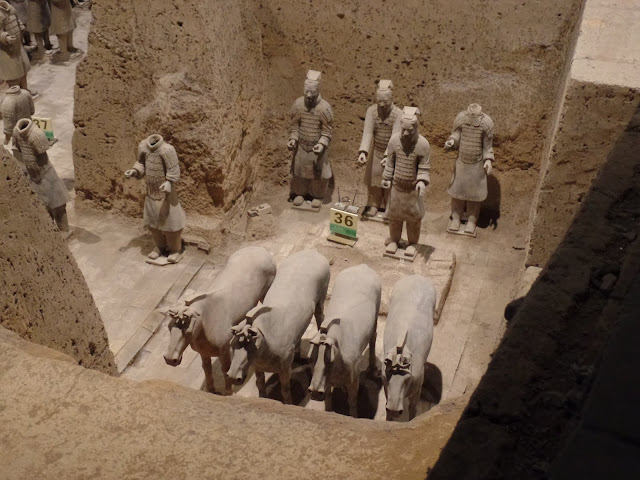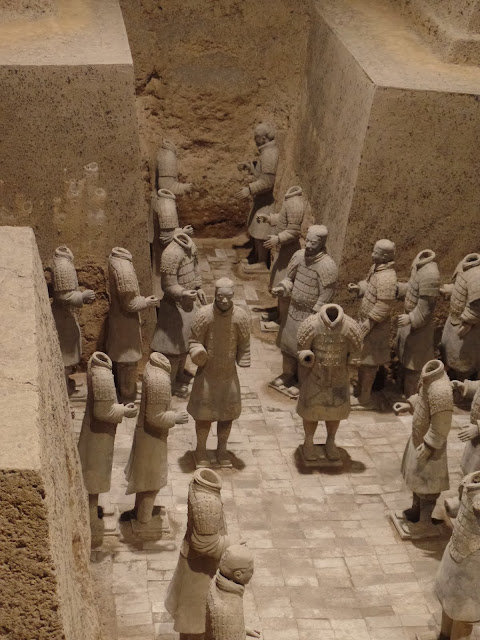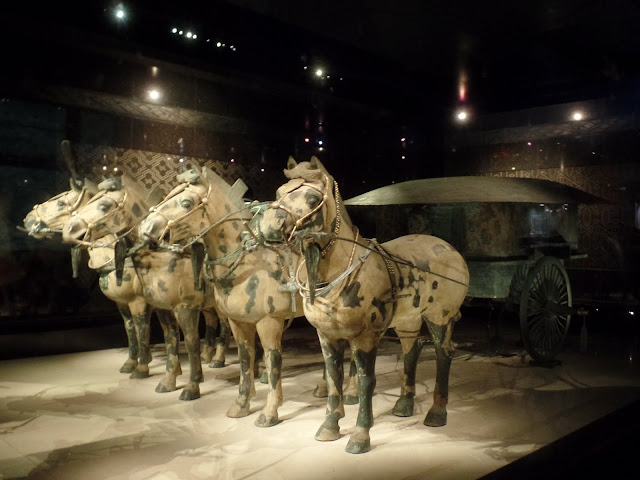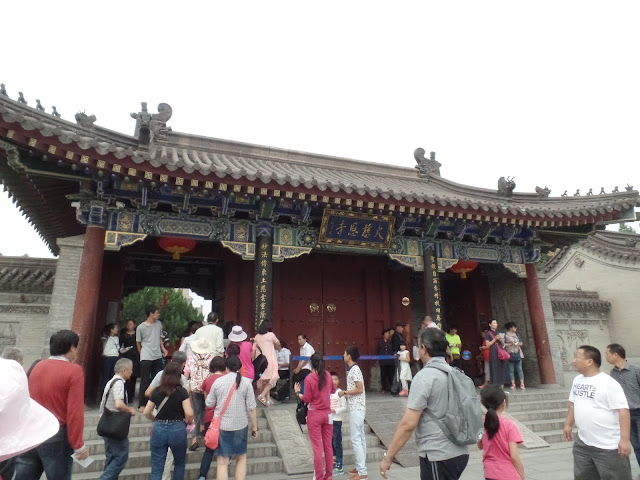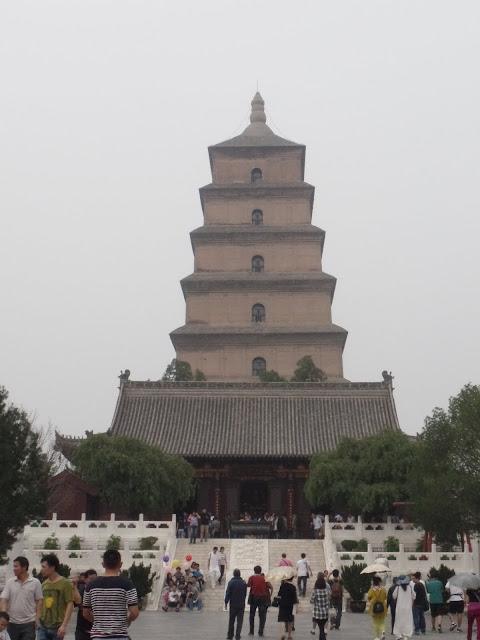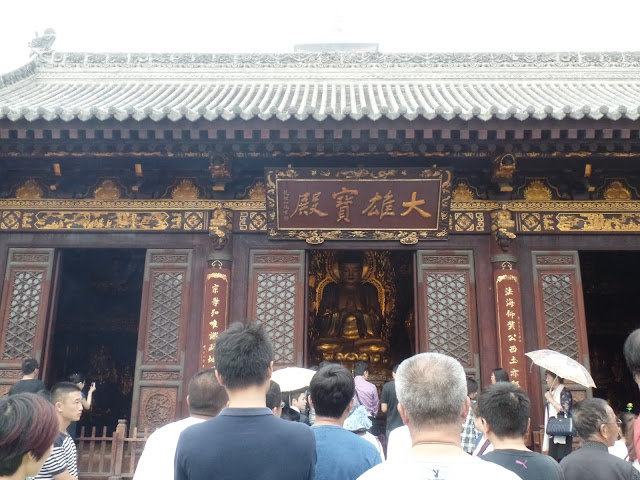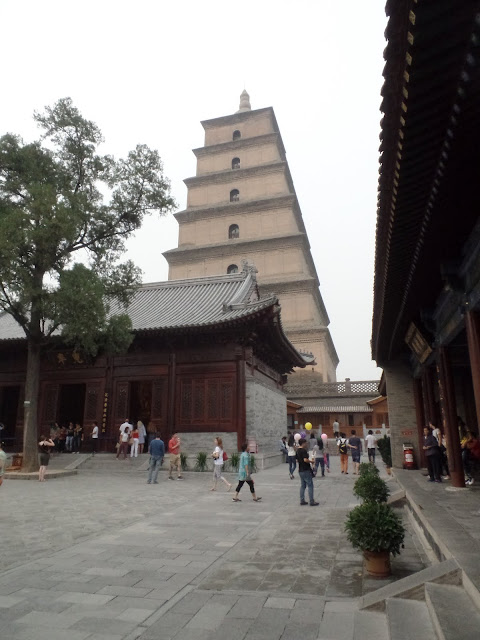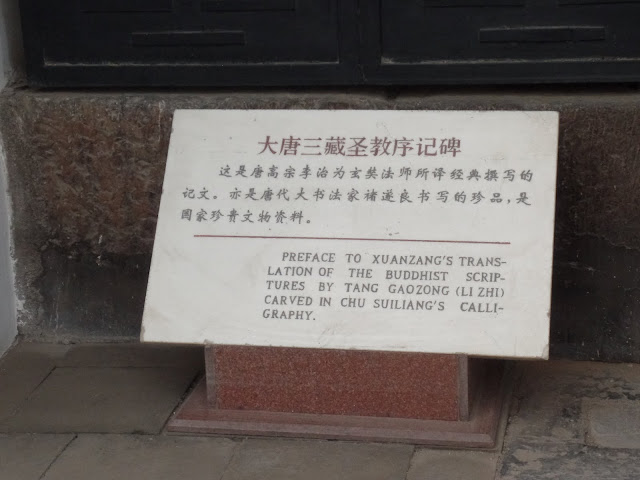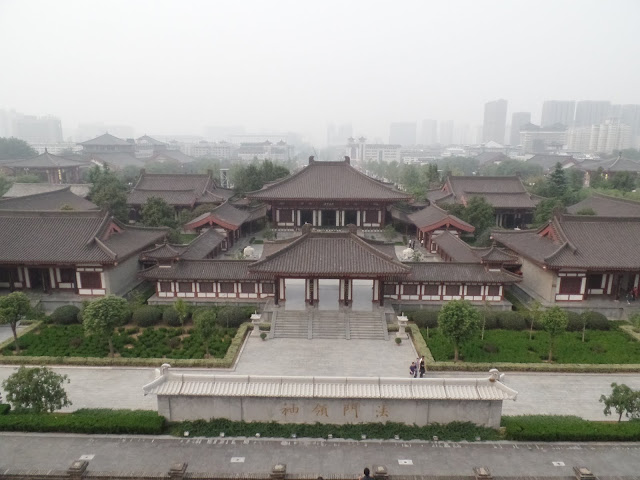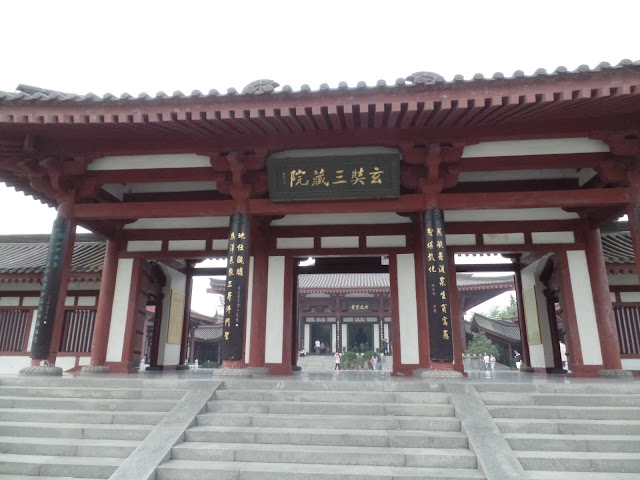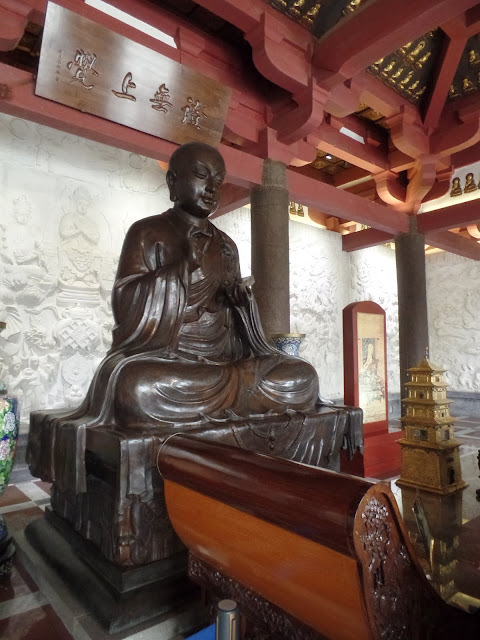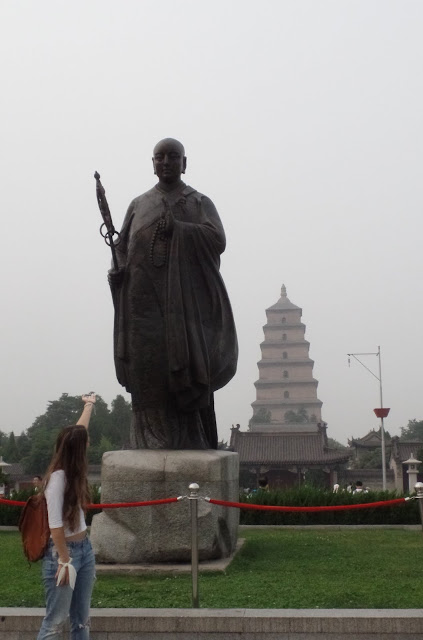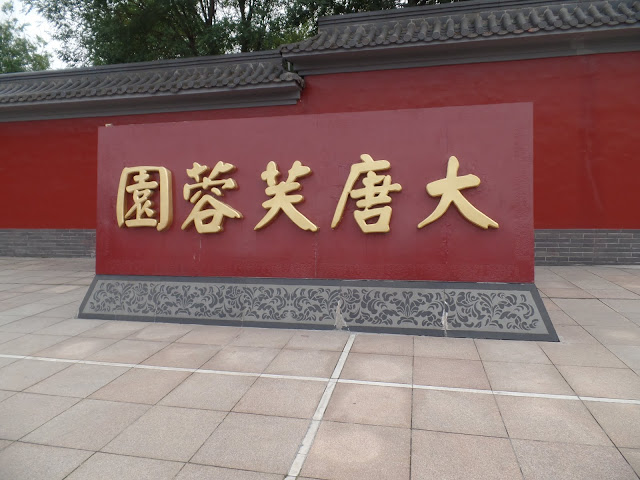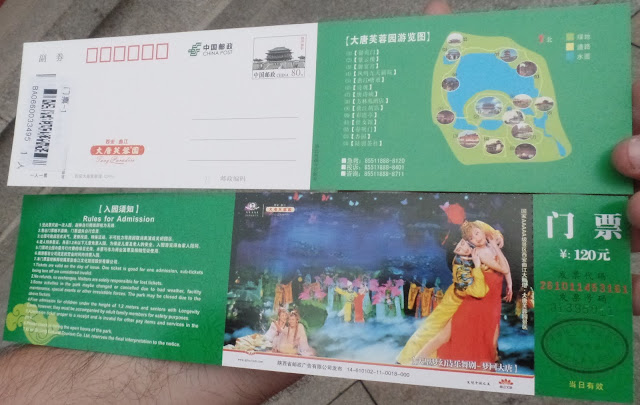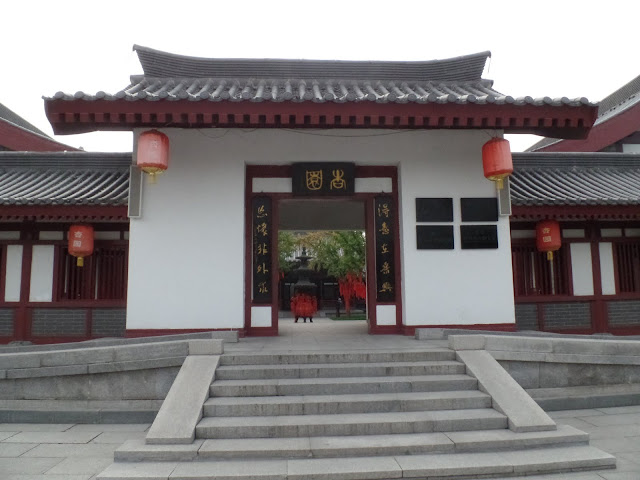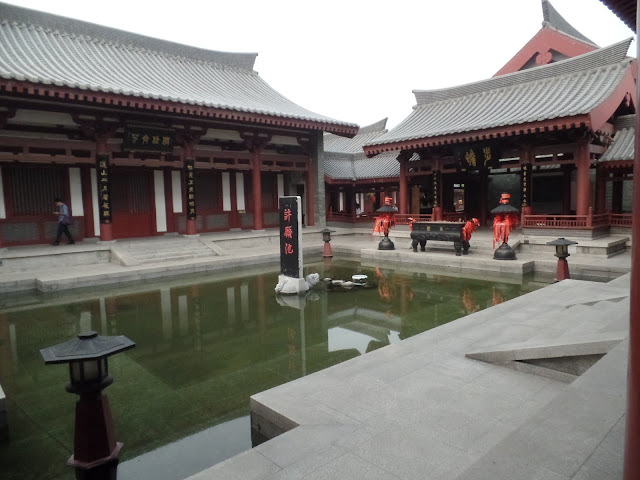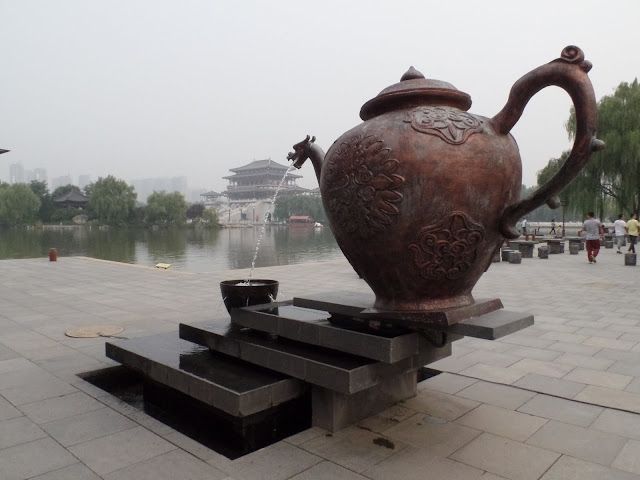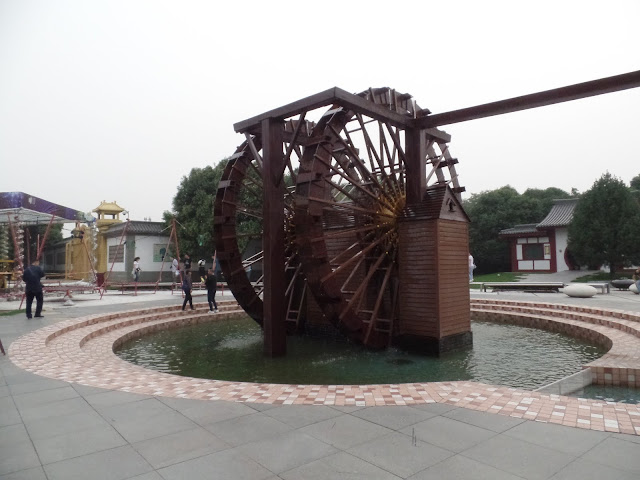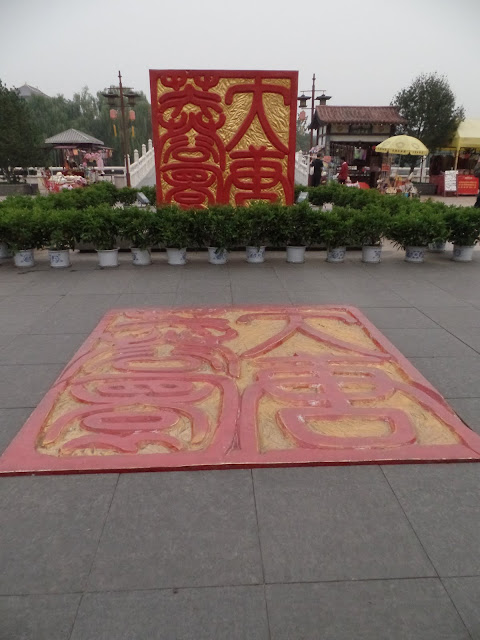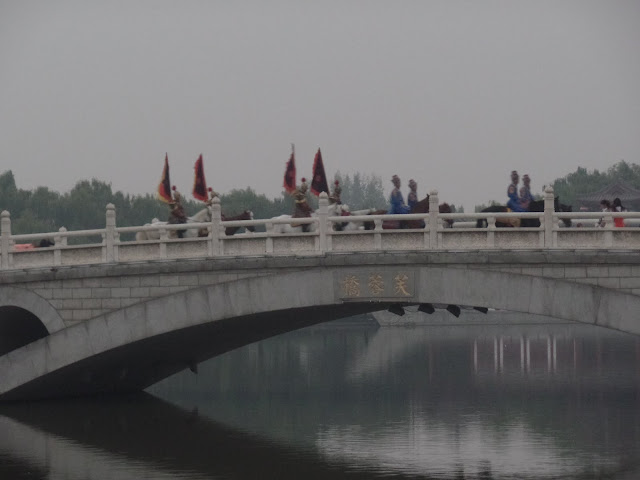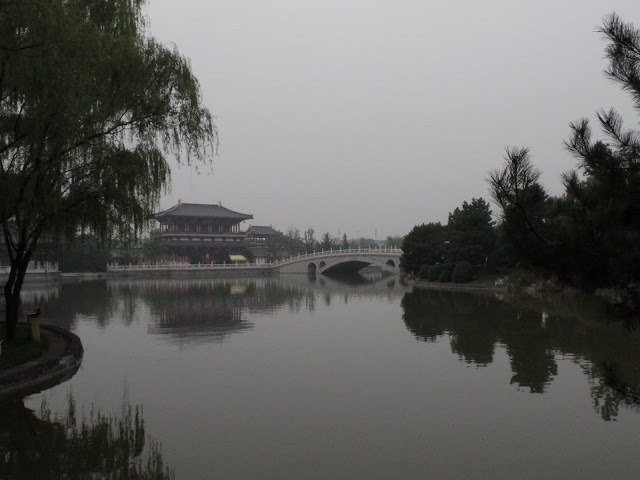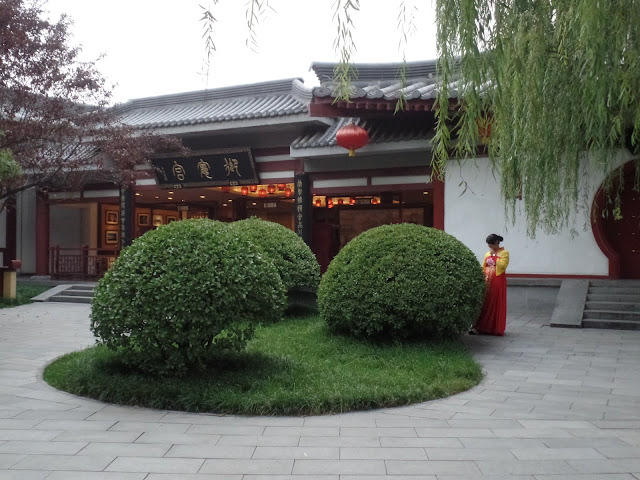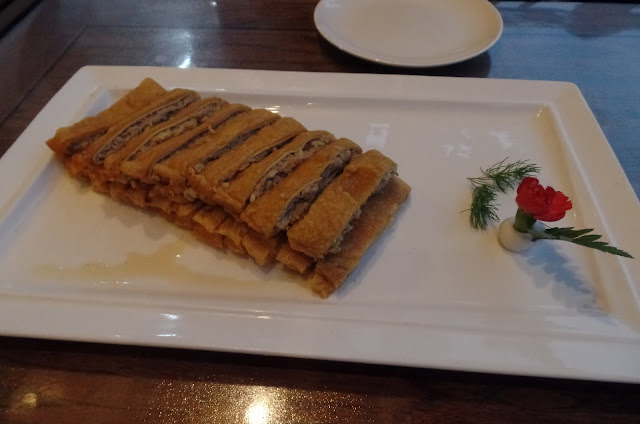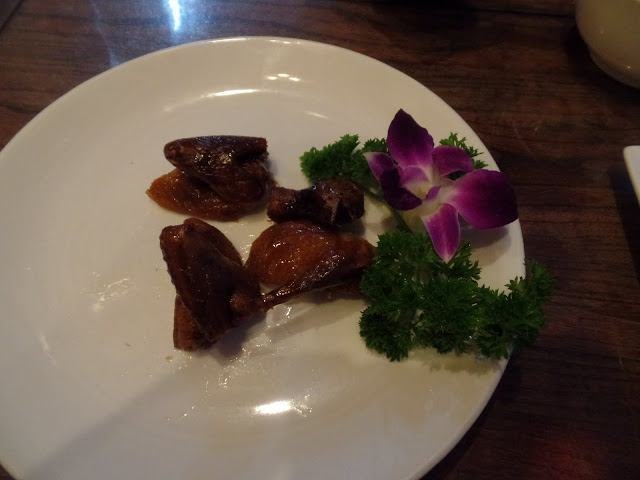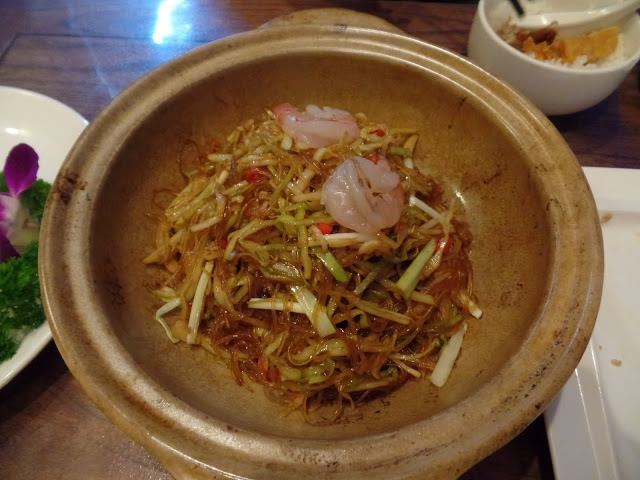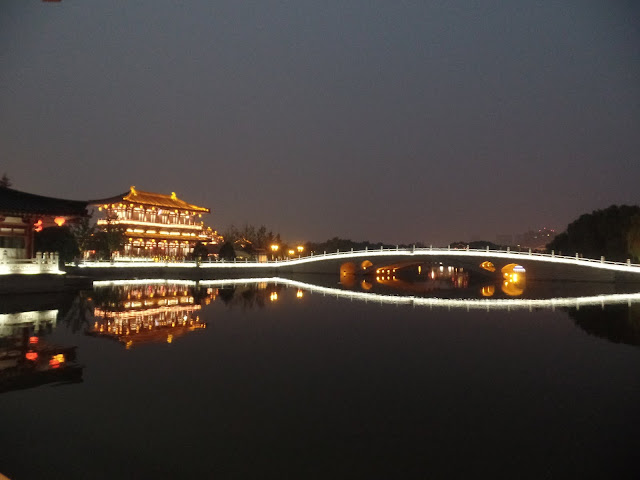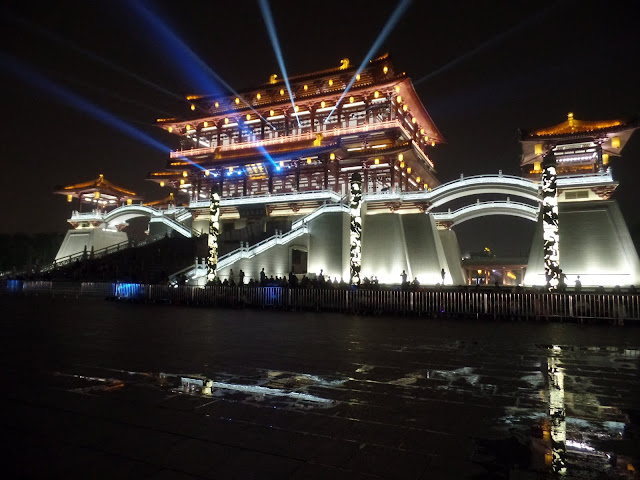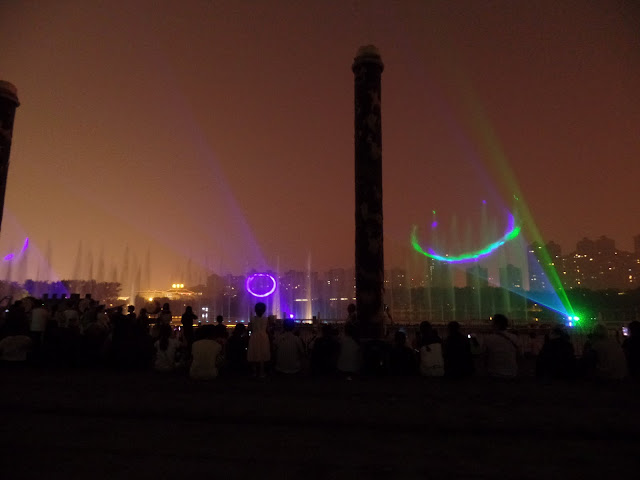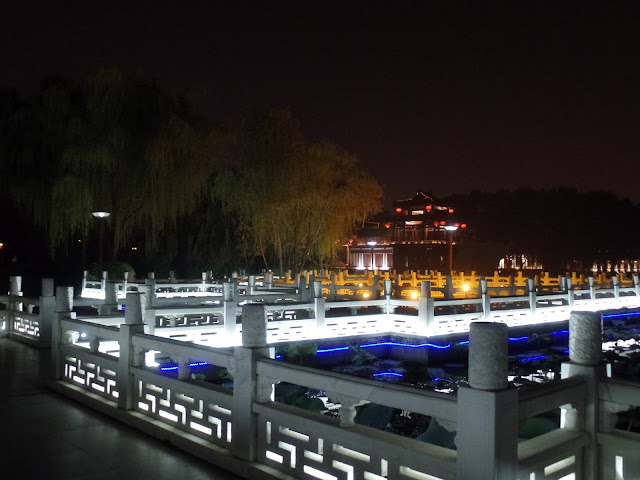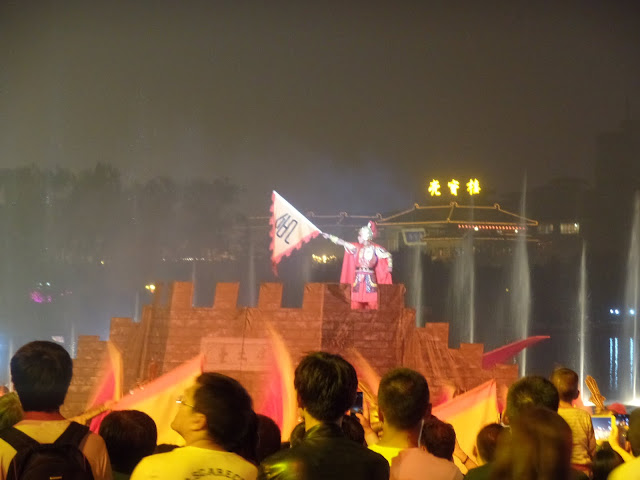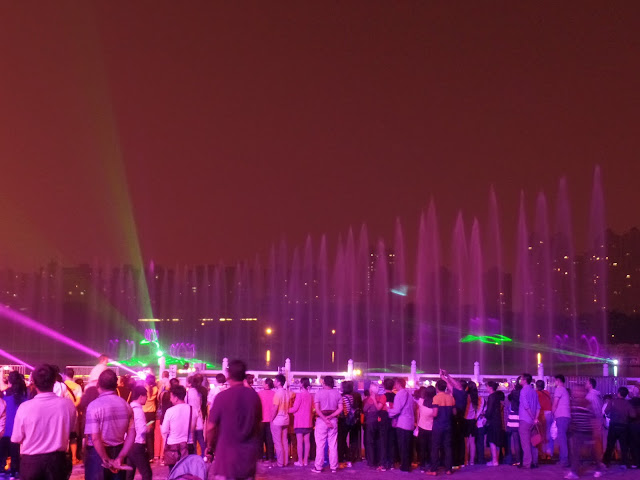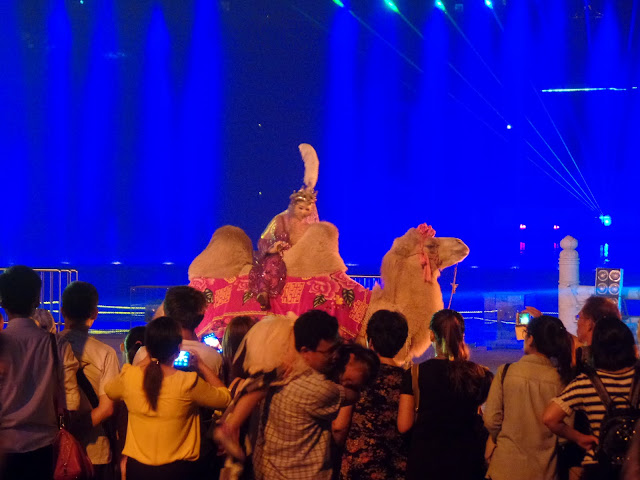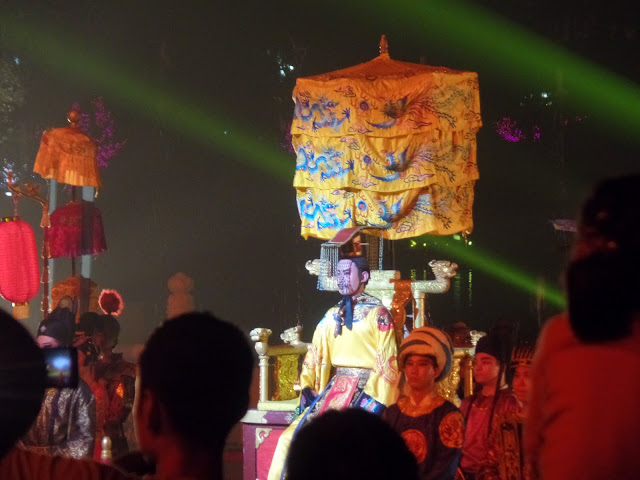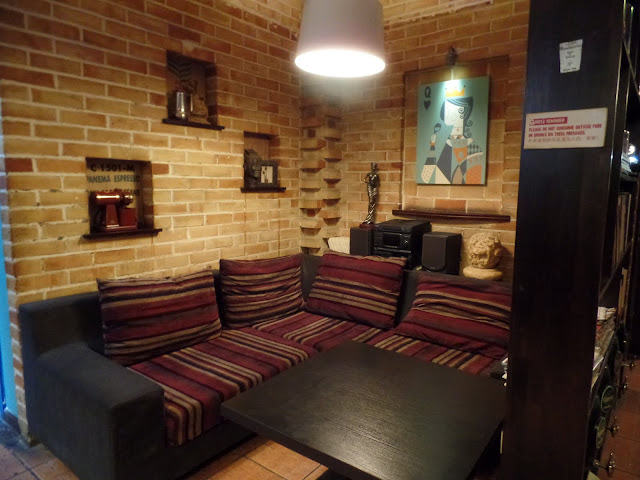Day 4
Xi'an (西安)
We woke up very early in the morning to prepare for check-out of the hotel, as we need to catch the High Speed Train to Xi'an departing at 7 am. We would be staying in Xi'an for the next 3 nights. The hotel staff helped us to call a taxi to come into the narrow Hutong, so that we do not need to drag our heavy luggage out to the main road. We took the taxi to Beijing West Railway Station (北京西站), and from there depart for Xi'an. Like the High Speed Train we took to Tianjin, it was travelling at an average speed of 300 km/hr as well. The overall journey was close to 6 hours and will stop at around 10 over stations throughout the journey. We slept for most of the train ride, since we were still tired after waking up so early in the morning.
Xi'an (formerly known as Chang'an (长安) before Ming dynasty), along with Beijing, is one of the Four Great Ancient Capitals of China. It was previously the capital of many important ancient Chinese dynasties, such as Zhou, Qin, Han, Sui and Tang. It is also the start point of the famous Silk Road in China. All these have led to the great historical and cultural significance of this city. We reached the Xi'an North Railway Station (西安北站) at around 1pm, from there we collected our pre-booked train tickets to Huashanbei (华山北站) and Beijing for the subsequent days. The Xi'an metro station Bei Kezhan (北客站) is connected to the railway station. As it was built and started operation in 2011, it appears much more modern and spacious than Beijing's subway system. We bought the metro tickets and took the Metro (Line 2) to Zhonglou Zhan (钟楼), where our hotel
Bell Tower Hotel (钟楼饭店) is located.
Bell Tower Hotel (钟楼饭店)
The city layout of Xi'an is interesting, as there's a city wall within it. Our hotel
Bell Tower Hotel (钟楼饭店) is located approximately the center within the city wall, which is also where many of the commercial activities are located. We had selected Bell Tower Hotel (钟楼饭店) because it is just beside the Zhonglou Zhan (钟楼) metro station and within walking distances to many large shopping malls and other major tourist attractions within the city wall. From the metro station, it was a short walk via the underpass to the hotel. The hotel is located just opposite of the Bell Tower (钟楼), which occupies the center location at the busy roundabout. The room is modern, clean and complete with all basic necessities.
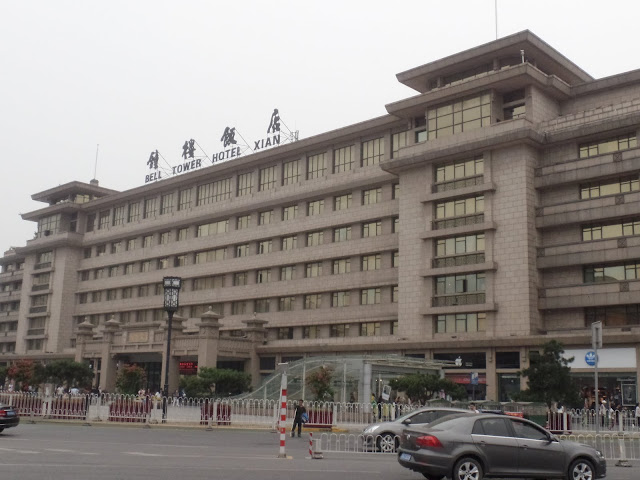 |
| Xi'an Bell Tower Hotel |
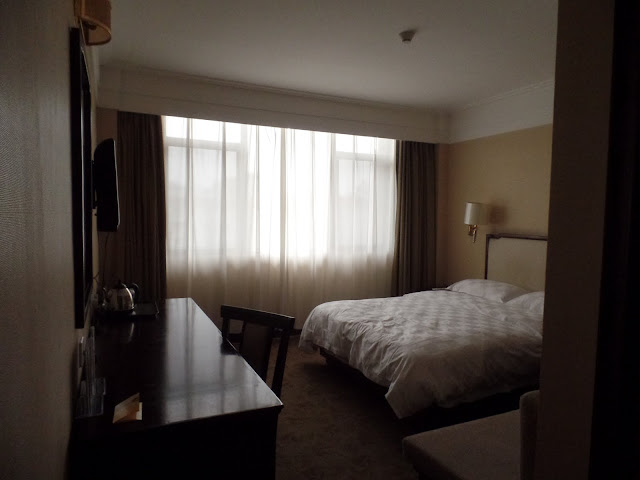 |
| View of the room |
 |
| View of the bathroom |
By the time we settled down, it was already close to 2pm and we haven't had our lunch yet. We were hungry and left our room for lunch.
Buy your China train tickets with Trip.com
Muslim Street (回民街)
From our hotel, we walked to the famous Muslim Street (回民街). It is a collection of many streets, starting from the Beiyuanman Street (北院门街) located just north of the Drum Tower (鼓楼). This area is known as the Muslim Street (回民街) because majority of the businesses are run by the ethnic Hui people. Since the establishment of the Silk Road, many of the Islamic traders and envoys from Middle East and Central Asia started to visit Xi'an and some eventually settled down here, forming the current Muslim population group here after many generations.
The main Beiyuanman Street (北院门街) consists of 2 rows of shops, mainly selling food, as well as many push carts along the street selling snacks. The popular Xi'an food/snacks that you can find here are the Biang Biang Mian (Biang Biang Noodles), Yang Rou Pao Mo (羊肉泡馍), Rou Jia Mo (肉夹馍), grilled lamb/beef skewers, steamed meat dumplings and dried dates.
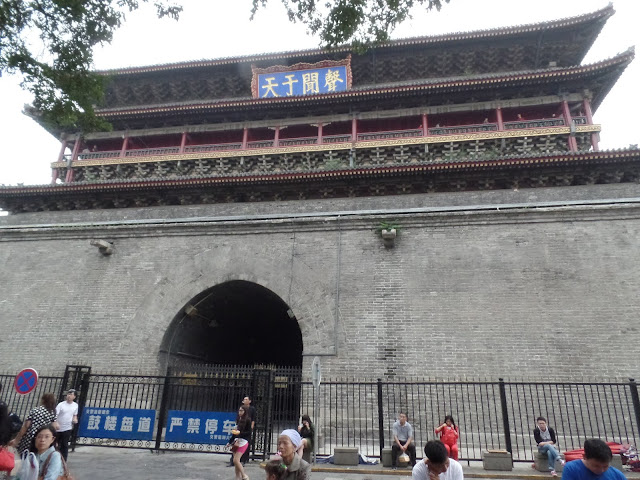 |
| Xi'an Drum Tower |
 |
| Bustling Xi'an Muslim Street (Beiyuanmen Street) |
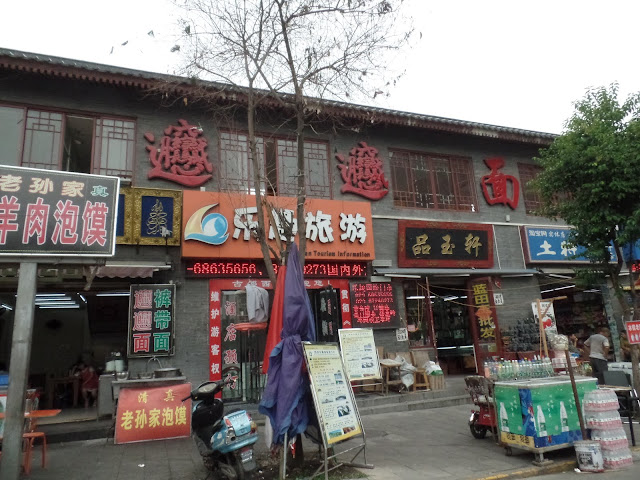 |
| Look at the complex character of "Biang" in red |
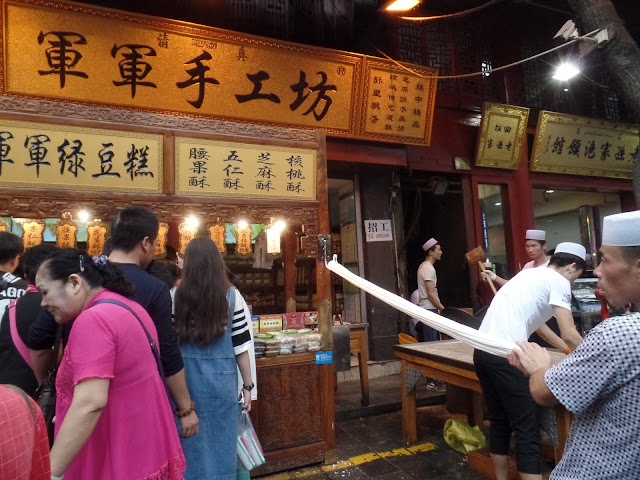 |
| Making of handmade candy |
We went to one of restaurant along the street and ordered the Biang Biang Mian and Yang Rou Pao Mo (羊肉泡馍). The Chinese character of "Biang" has so many strokes and is so complex that it is currently not available in the computer. The character "Biang" has no meaning to it, and based on one of the theory, it is associated to the sound made when the chef slaps the noodle dough against the table. The Biang Biang Mian consist of handmade thick noodles, served with meat (which I had ordered lamb), cabbage and tomato, which is tasty and appetising. The Yang Rou Pao Mo (羊肉泡馍) is soup based, served with cellophane noodles, lamb and topped with small pieces of bread.
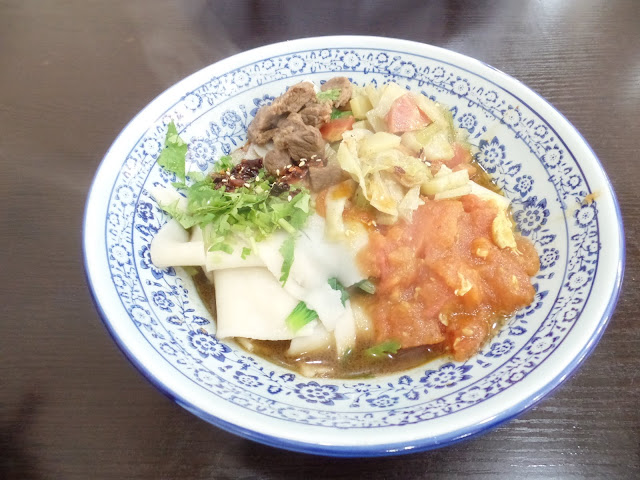 |
| Biang Biang Mian |
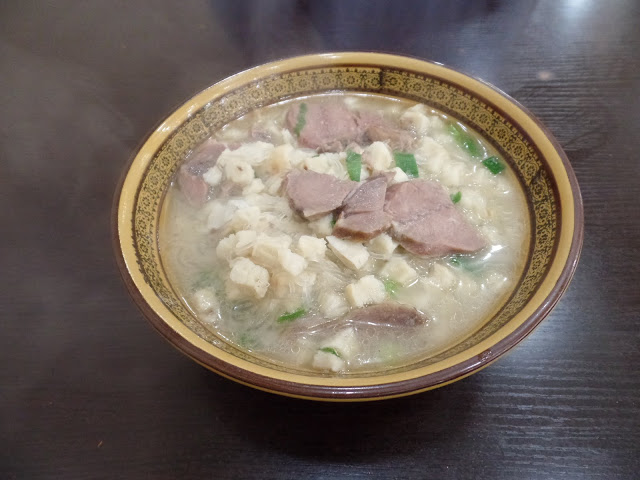 |
| Yang Rou Pao Mo |
After lunch, we continued to walk around the area. We turned into the Huajue Alley (化觉巷), which runs adjacent and parallel to the Beiyuanman Street (北院门街). Over here, the street is narrower and less crowded, with most of the shops here selling souvenirs, handicrafts, clothing and decorations. If anyone wants to buy any souvenirs in Xi'an, it is recommended to buy here, as it is cheaper than other tourist areas. Along the way, we also passed by the Great Mosque of Xi'an (西安大清真寺). This is the oldest mosque in China, built during the Tang dynasty. The mosque looks very different from those you would see in the Arab and South East Asian countries, as it is architectural style looks very much like typical ancient Chinese constructions. The visit to the mosque was not in my itinerary due to time constraint, but is recommended for others to visit if time permits.
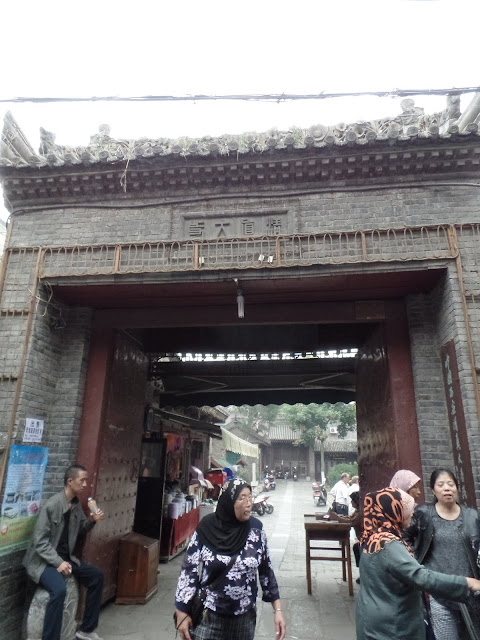 |
| Entrance to the Great Mosque of Xi'an |
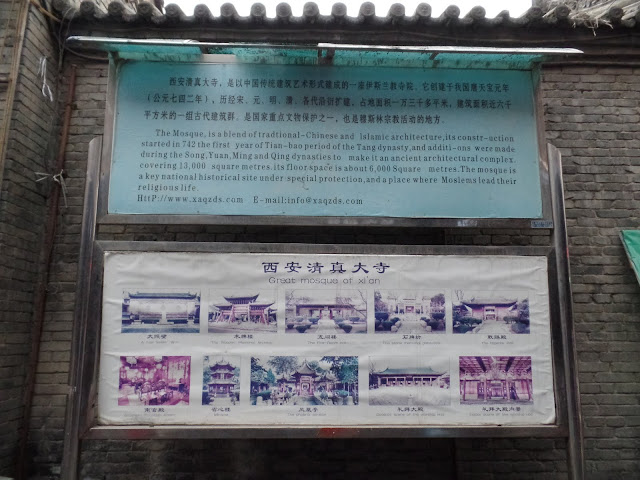 |
| Introduction to the Great Mosque of Xi'an |
Drum Tower (鼓楼)
We turned out from Huajue Alley (化觉巷) and headed to the Drum Tower (鼓楼). We bought the joint tickets that allowed us to visit both Drum Tower (鼓楼) and Bell Tower (钟楼) on the same day. The Drum Tower (鼓楼) and Bell Tower (钟楼) are two iconic historical structures in the city.
 |
| Joint tickets to Xi'an Drum and Bell Tower |
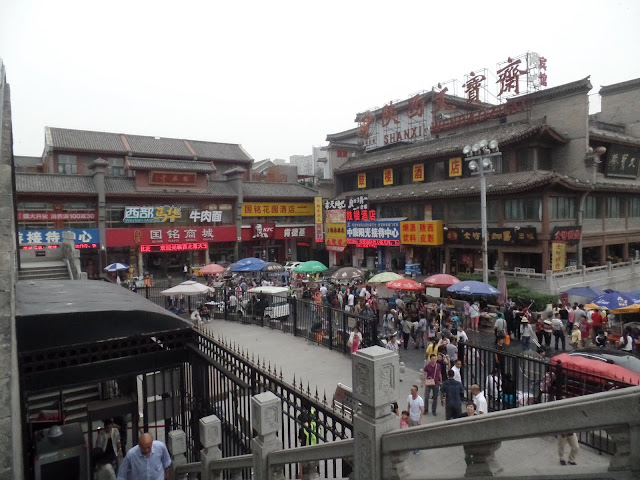 |
| View of street around the Xi'an Drum Tower |
Both built during the Ming dynasty, they were used to indicate time in the ancient days. On the second level of the Drum Tower (鼓楼), we could see 24 drums which represent the 24 weather periods used by the ancient Chinese. Within the building, there's a Chinese percussion performance on-going, which we stopped our steps to watch. There's also an exhibition on the different types of Chinese drums from different era and ethnic groups.
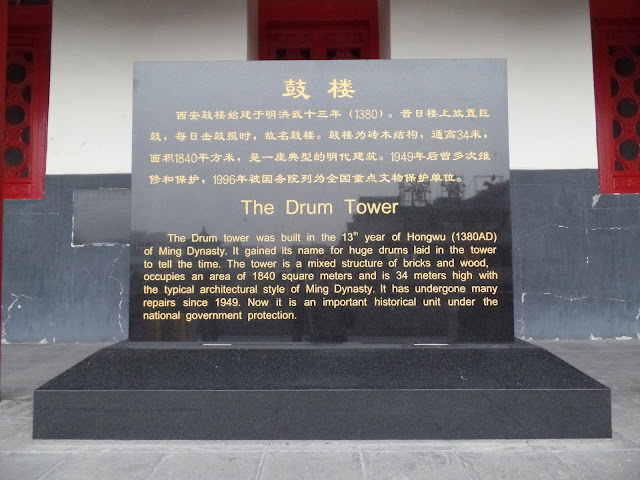 |
| Intro of Xi'an Drum Tower |
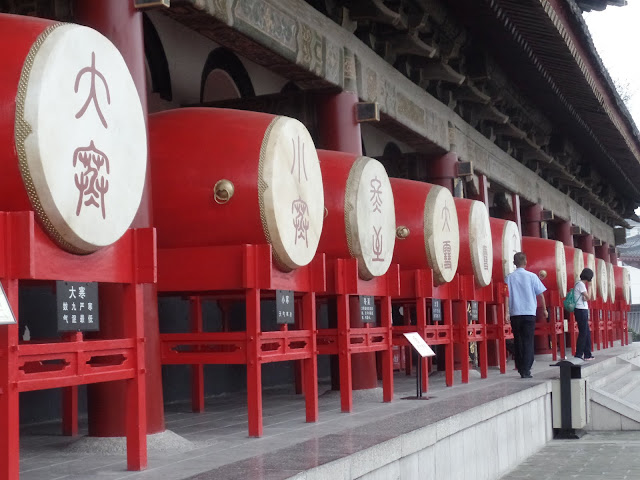 |
| Rows of drums on display |
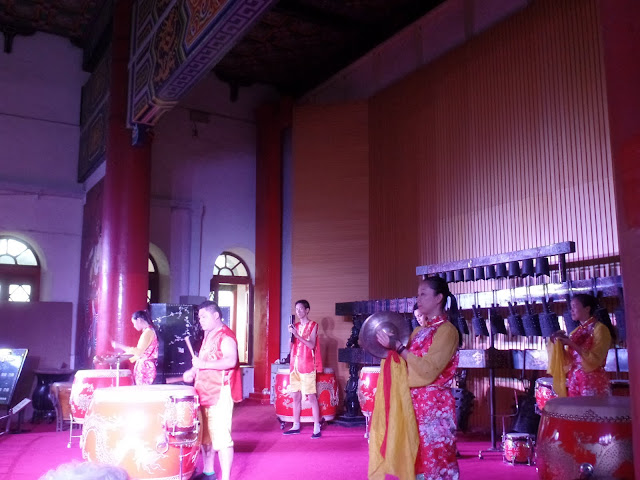 |
| Chinese percussion performance at Xi'an Drum Tower |
On the third level, there's another exhibition on the traditional Chinese furniture. We walked out to the balcony corridor, which offered a great view of the surrounding streets and the nearby Drum Tower (鼓楼). After this we made our way to the Bell Tower (钟楼).
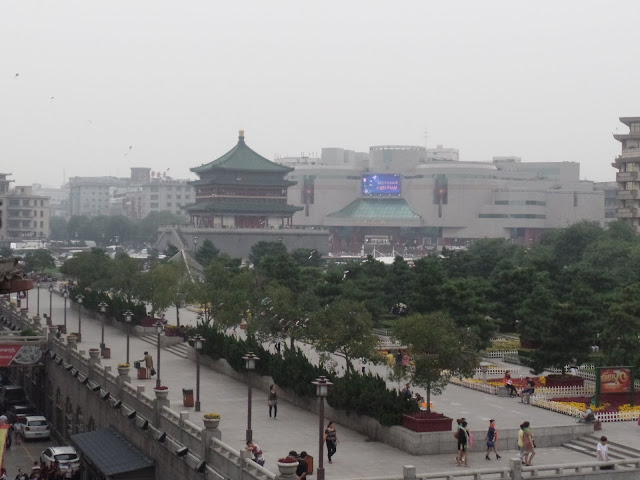 |
| View of Bell Tower from the Drum Tower |
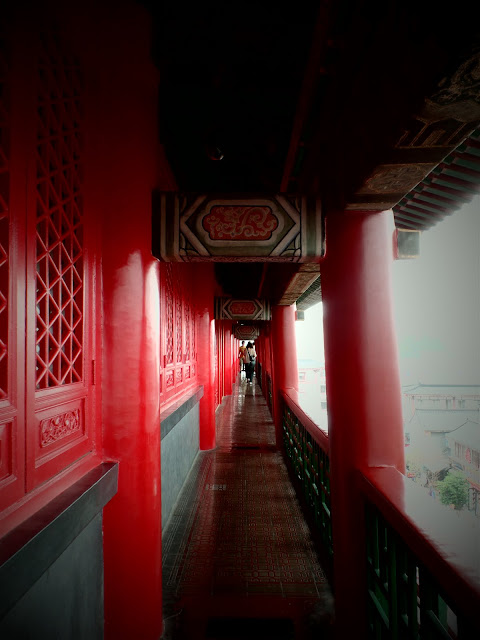 |
| Balcony corridor at Xi'an Drum Tower |
Bell Tower (钟楼)
There's only one way to access the Bell Tower (钟楼), which is via the underpass around the attraction. Once on the second level, we could see the prominent Jingyun Bell (景雲钟), which is the replica of the actual Tang dynasty era bell that once hung inside the tower.
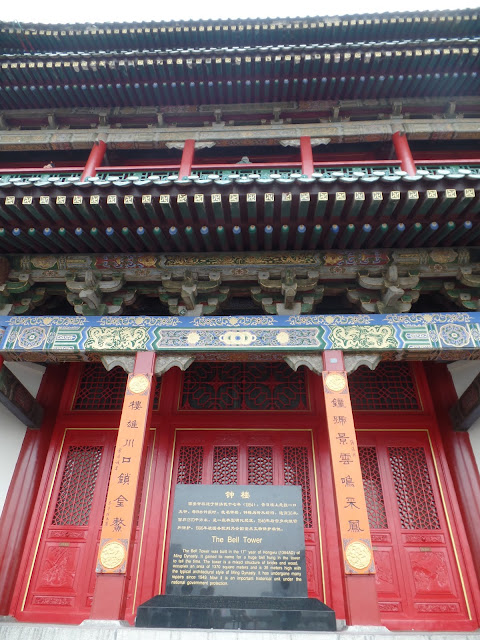 |
| Xi'an Bell Tower |
 |
| View of the Yongning Gate (Xi'an City Wall) at the end of the South Street |
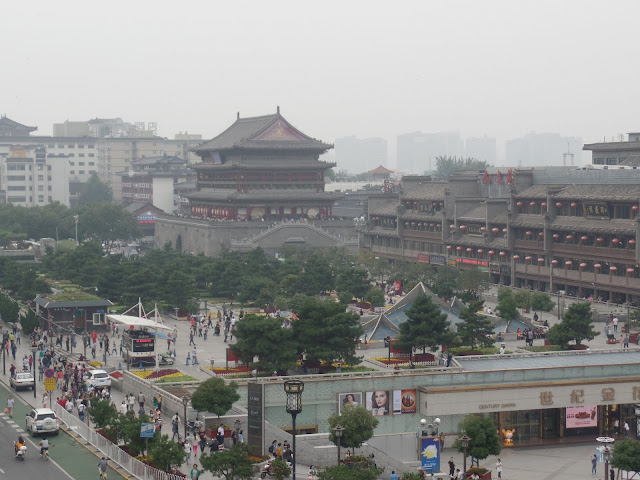 |
| View of the Drum Tower from the Bell Tower |
Inside the building, there's a stage for the Bells performance, but we had missed the timing of the performance. Other than this, there's an exhibition showcasing some of the ancient artifacts unearthed in the region dated back to the Han and Tang dynasties. The visit here was relatively shorter than the Drum Tower (鼓楼), which we mainly spent time taking photographs around the tower.
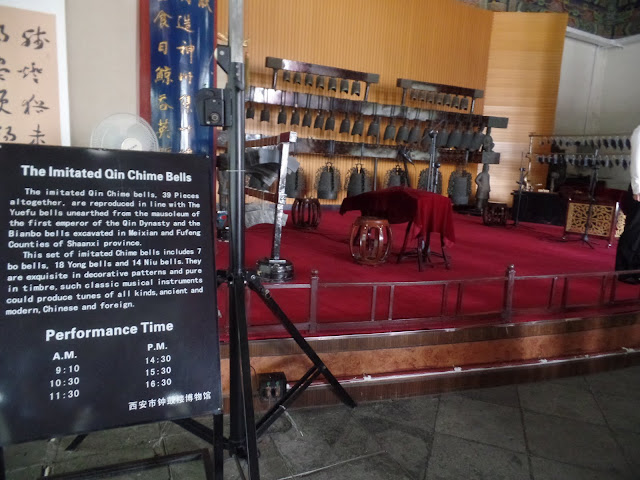 |
| Stage for the Bells performance |
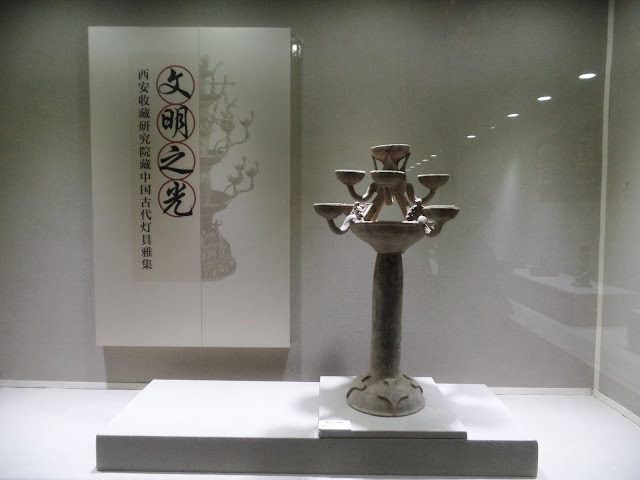 |
| An ancient light candle holder on exhibition |
Xi'an City Wall (西安城墙)
After we exited the Bell Tower (钟楼), we walked south along the South Street (南大街) towards our next attraction, Xi'an City Wall (西安城墙). The city wall is built during the Ming dynasty, mainly for defense purpose. The wall is around 13.7 km long in total, surrounded by a deep moat. At the end of the South Street (南大街), we crossed the road via the underpass and reached the Yongning Gate (永宁门) of the city wall. We bought the tickets at the ticket office and started climbing up the wall.
 |
| Xi'an City Wall ticket office |
 |
| Xi'an City Wall entrance tickets |
 |
| Yongning Gate |
On top of the wall, one would realised that the width of wall is very wide, so wide that it could allow visitors to tour around the wall by electric car or bicycle. The bicycles can be rented near the Yongning Gate (永宁门), which technically allows visitors to cycle around the entire perimeter if they have the time. On top of the wall, it offers another good view of the city, blended with a mix of ancient Chinese architectures and modern city skyscrapers.
 |
| On top of the city wall (Yongning Gate) |
 |
| View on top of the city wall |
 |
| Inner view from the city wall |
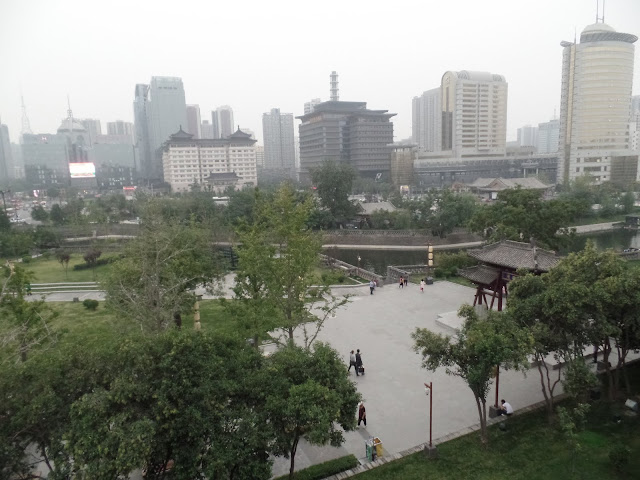 |
| Outer view from the city wall, which the moat can be seen |
We did not take the electric car nor rented the bicycles, just simply stroll along the wall. Along the way, we could see many different defense features of the wall such as the battlements and watch towers, all with proper Mandarin and English explanations. We rested for a while and enjoyed the sunset view.
 |
| Explanation of the battlements |
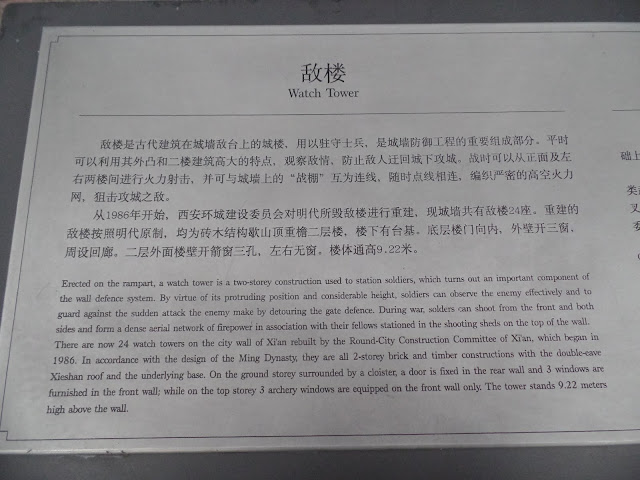 |
| Explanation of the watch tower |
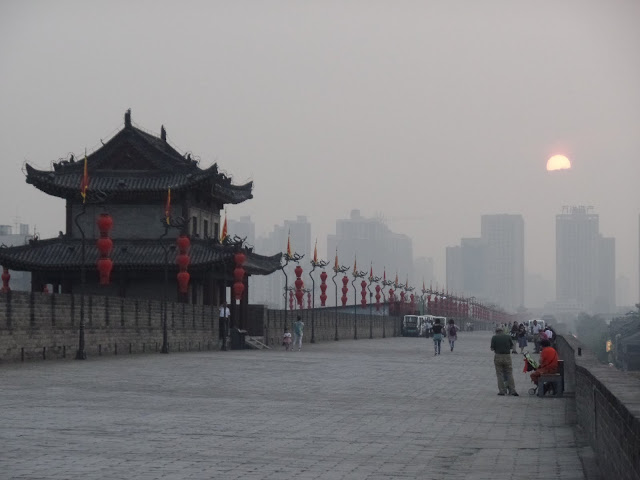 |
| Sunset view on top of the city wall |
By the time we returned back to the Yongning Gate (永宁门), it's getting dark and the wall lighted up. The night view of the lighted city wall is beautiful and provides another different experience looking at it. At the gate, there's also a model of the ancient Tang city layout superimposed with the current city layout.
 |
| Night view of Yongning Gate |
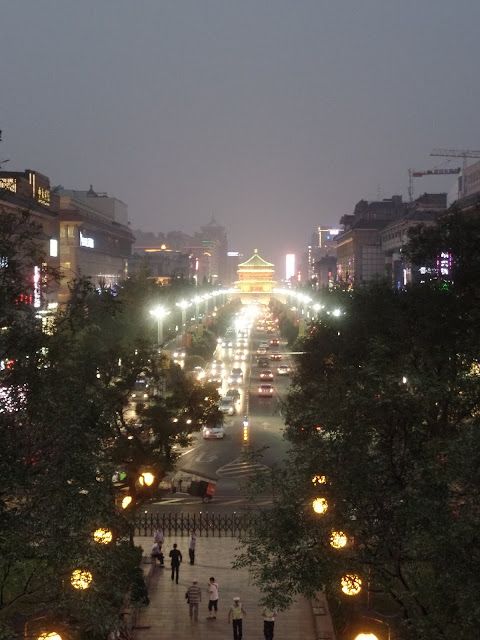 |
| View of Bell Tower at the end of South Street |
 |
| Night time inner view from the city wall |
 |
| Night time outer view from the city wall |
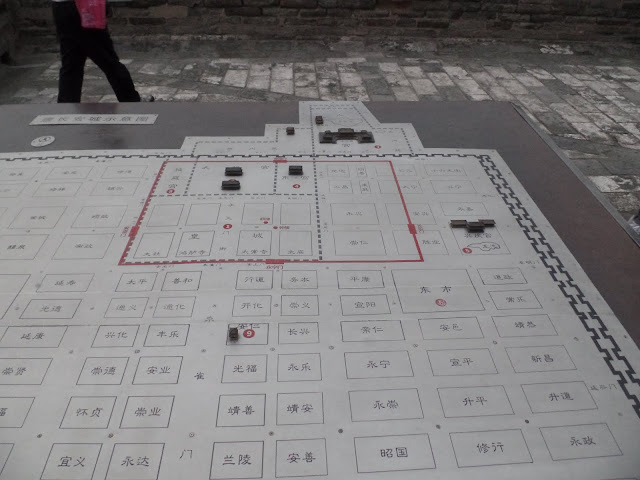 |
| Model of Tang dynasty Xi'an city layout |
Defu Alley (德福巷)
It had been a very tiring day, so we decided to end the day by having dinner at the nearby Defu Alley (德福巷), before returning to the hotel. From the main road outside Yongning Gate (永宁门), we had to walk quite deep into the Defu Alley (德福巷) before we could see the rows of pubs and restaurants. This area is very popular among the youngsters for its nightlife. We went into a place called De Fu Lou Coffee & Bar (德福楼) to have our dinner. The whole place is very cozy and well decorated based on European-styled theme.
 |
| Decorations in De Fu Lou Coffee & Bar |
We ordered Pizza and Pork Cordon Bleu, along with Tsingtao beer and soft drink.
 |
| Our beverage |
 |
| Pizza |
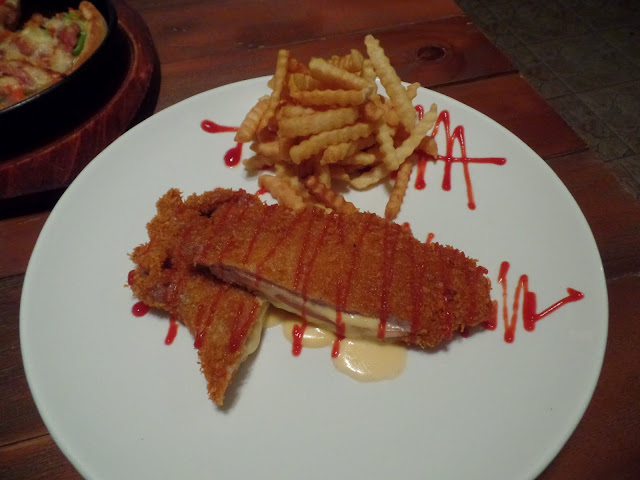 |
| Pork Cordon Bleu |
After the hearty meal, we slowly made our way back to the hotel. Just as we reached the hotel, the brightly decorated Bell Tower (钟楼) caught our attention.
 |
| Night view of Xi'an Bell Tower |
Follow the links below to the other days of my China tour:
Day 1: Beijing (Yonghe Lama Temple, Shizhahai, Prince Gong Mansion, Behai Park, Gui Jie)
Day 2: Beijing (Tiananmen Square, Forbidden City, Old Summer Palace, Wangfujing)
Day 3: Tianjin (Italian Style Town, Nanshi Food Street, Drum Tower, Ancient Cultural Street, Quanjude Peking Roast Duck)
Day 4: Xi'an (Muslim Street, Drum Tower, Bell Tower, Xi'an City Wall, Defu Alley)
Day 5: Xi'an (Terracotta Army Museum, Da Ci'en Temple, Big Wild Goose Pagoda, Tang Paradise)
Day 6: Huashan
Day 7: Beijing (Temple of Heaven, Silk Street)
Day 8: Beijing (Great Wall - Badaling, Ming 13 Tombs - Ding Ling, Shizhahai)
Day 9: Beijing (Summer Palace)
